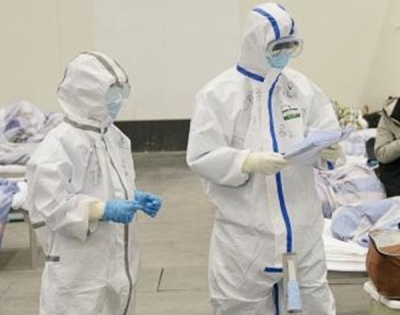Delhi: 41-year-old woman successfully operated with robot-assisted ENT surgery
By IANS | Published: June 19, 2020 07:22 PM2020-06-19T19:22:05+5:302020-06-19T19:35:20+5:30
A 41-year-old woman suffering from rare schwannoma in the neck (parapharyngeal space tumour) was successfully treated with robot-assisted surgery ...

Delhi: 41-year-old woman successfully operated with robot-assisted ENT surgery
A 41-year-old woman suffering from rare schwannoma in the neck (parapharyngeal space tumour) was successfully treated with robot-assisted surgery in Delhi.
Indraprastha Apollo Hospitals performed a robot-assisted ENT surgery after Babli Bhati, was presented at the hospital on June 4 with progressive swelling of the neck for the past two months. Post-admission, a contrast MRI was done where the doctors discovered that Bhati has shwanomma (tumour) in the neck measuring A3.8 cms.
The doctors said that the surgery of a neck schwannoma is a challenging procedure, as these tumours arise between delicate areas of large blood vessels and critical cranial nerves in the neck and any kind of dissection if not done with accuracy can result in lifelong morbidity to the patients.
Additionally, 14 per cent of such tumours if not removed at an early stage can be malignant, causing head and neck cancers. "Bhati's tumour in the neck was progressive in nature, and because of its large size it was putting pressure on the cranial nerves present in the neck obstructing her breathing process, had it been ignored for a longer time, there were chances of the tumour turning cancerous," Dr Kalpana Nagpal, Indraprastha Apollo Hospitals, said in a statement.
A team of senior surgeons conducted a robot-assisted surgery for the removal of the tumour. "In this kind of robotic surgery, we get a magnified 3D image of the surgical site on a console that displays these images," Nagpal said.
"It helped in the preservation of vital structures in the neck because of precise dissection as the surgical planes are seen with ten-fold magnification," Nagpal added. This technique helped the surgeons ensure the preservation of vital structures surrounding the surgical area.
The procedure was one hour-long, and the patient experienced minimal blood loss. With no breathing problems or any kind of pain, the patient was discharged within 24 hours of the surgery. "Unlike any other surgery, I didn't feel any pain and was discharged within 24 hours. I am grateful to the team that gave me such a seamless experience of surgery," Bhati said.
( With inputs from IANS )
Open in app